With over 500 million blogs vying for a reader’s attention, how can you expect to stand out from the crowd? The answer is simple: You need to invest in keyword research for your blog. Including a keyword research checklist in your digital marketing strategy can help you quickly organize your approach and connect you with your target audience.
What is Keyword Research?
Keyword research lets you find out what words your target audience uses when searching for solutions to their problems. With the right keywords, enterprises are able to zero in on their target audience, connecting with them more effectively. They are so highly valued that approximately 71% of marketers use strategic keywords as their number one strategy for search engine optimization (SEO). Keyword research can also help you significantly improve your overall ranking on search engines such as Google and Bing. That’s because search engines carefully crawl each piece of content you publish. When you use keywords relevant to your readers, those web crawlers will rank your content since it addresses consumers’ wants or needs. With recognition from web crawlers, your brand can leap to even higher rankings in search engine results pages (SERPs).
Finding the right blog keywords isn’t as simple as picking and writing about a topic. The keywords your audience uses change over time, so it’s vital that you take the time to conduct keyword research. The research will show you which keywords and phrases (long tail keywords) are currently in use (or trending) and which are outdated. With the right SEO tools and a keyword research checklist, finding the right keywords for your blog can be easy.
Why is a Keyword Research Checklist Essential?
Keyword research can be overwhelming, especially if you’re new to blogging. That’s why a handy blog keyword research checklist is essential to helping you streamline your search for the right keywords. It lets you take the guesswork out of finding relevant and suitable keywords. With a systematic approach, you won’t have to strike out mindlessly.
What to Add to Your Blog Keyword Research Checklist
Six important elements should be included as you prepare your keyword research checklist. Follow the steps in order since each builds off the previous one.
Determine Your Topic
Determine what you want to blog about. If you already have a blog, this step will be much easier for you. Simply look at your blog posts and determine which topics you’ve written about and which topics you would like to add in the future. If you don’t currently have a blog, then you should take the time to write up a few blog ideas. Make sure each blog idea offers something valuable to readers.
Brainstorm Keywords
When it comes to keyword research, brainstorming is vital. It allows you to generate a range of keyword ideas to help you find the right keywords for your blog. Consider writing down at least ten keyword ideas to use as root keywords that you can expand on later.
Choose a Keyword Research Tool
Now that you have a list of keywords to work with, the next step is to determine which keyword research tool you want to use. There are several good options available. Experiment with them to see which one suits you best. Here are a few of the most popular keyword research tools:
Semrush
Ahrefs
Google Search Console
Ubersuggest
Keywordtool.io
Perform a Keyword Search
Once you’ve decided on a keyword research tool, it’s time to start plugging your root keywords into it. You’ll be able to identify which keywords or long-tail keywords are already in use. It can also generate relevant alternative keywords and keyword phrases that can help you better optimize your content for search engines.
Check the Competition
You should also check the competition for each keyword that you find. Keeping competitors in mind will allow you to assess whether there is a need for a more relevant or targeted keyword. For example, if you’re finding that you’re using a keyword used by lots of other bloggers, consider using a more specific or targeted keyword that will draw in your target audience.
Expand Your List
Once you have a list of keywords to work with, you should expand upon each keyword. Try adding synonyms and related keywords to understand better the keywords your audience is using. It will also allow you to generate a list of long-tail keywords more likely to be searched for in the future.
Get Help from the Keyword Research Experts
Having a keyword research checklist at the ready will help take some of the pressure off your marketing team. It will guide them in finding the best keywords for your brand’s blog.
Still struggling? Then let the team at CadenceSEO help! CadenceSEO is a full-service digital marketing agency passionate about helping businesses grow their online presence. Contact us today to learn how our SEO nerds can support your marketing strategy with keyword research!






